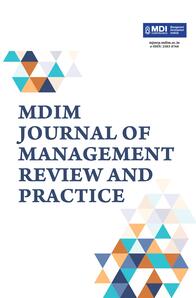
1 Management Development Institute Murshidabad, Kolkata, West Bengal, India
2 Faculty of Management and Commerce, The ICFAI University Tripura, Kamalghat, Tripura, India
Creative Commons Non Commercial CC BY-NC: This article is distributed under the terms of the Creative Commons Attribution-NonCommercial 4.0 License (http://www.creativecommons.org/licenses/by-nc/4.0/) which permits non-Commercial use, reproduction and distribution of the work without further permission provided the original work is attributed.
Modern networking conversations generate annotated metadata, necessitating a method for synthesizing insights from statistics. Emotion detection is crucial for practical conversations, distinguishing joy, grief, and wrath. Corpora are becoming the standard for human–machine interaction, aiming to make interactions feel natural and real. A paradigm that identifies debates and customer views can provide a human touch to these interactions. Researchers developed a machine learning framework for assessing emotions in English phrases, utilizing Long Short Term Memory perspective and real-time emotion recognition in idiomatic speech. Emotion recognition rule is created using ontologies like Word Net and Concept Net, Naive Bayes, and Random Forest. Real-time analysis of written words and facial expressions significantly outperforms current algorithms and commandment classifiers in identifying emotional states.
Feelings, detailed statistics, data mining, machine learning
Calvo, R. A., & D’Mello, S. (2010). Affect detection: An interdisciplinary review of models, methods, and their applications. IEEE Transactions on Affective Computing, 1(1), 18–37. https://doi.org/10.1109/t-affc.2010.1
Chou, S. T., Lee, Z. J., Lee, C. Y., Ma, W. P., Ye, F., & Chen, Z. (2020). A hybrid system for imbalanced data mining. Microsystem Technologies, 26(9), 3043–3047.
Cohn, J. F., & Katz, G. S. (1998). Bimodal expression of emotion by face and voice. In Proceedings of the sixth ACM international conference on Multimedia: Face/gesture recognition and their applications (pp. 41–44). Association for Computing Machinery. https://doi.org/10.1145/306668.306683
De Silva, L., & Ng, N. P.C. (2002). Bimodal emotion recognition. In Proceedings fourth IEEE international conference on automatic face and gesture recognition. IEEE. https://doi.org/10.1109/afgr.2000.840655
Kao, E. C. C., Liu, C. C., Yang, T. H., Hsieh, C. T., & Soo, V. W. (2009). Towards text-based emotion detection a survey and possible improvements. In Proceedings of the 2009 international conference on information management and engineering. IEEE. https://doi.org/10.1109/icime.2009.113.
Khalili, Z., & Moradi, M. H. (2009). Emotion recognition system using brain and peripheral signals: Using correlation dimension to improve the results of EEG. In Proceeding of the 2009 international joint conference on neural networks (pp. 1920–1924). IEEE.
Liyanage, L., Elhag, T., Ballal, T., & Li, Q. (2000). Knowledge communication and translation – A knowledge transfer model. Journal of Information & Knowledge Management, 8(1), 31–42.
Singh, J., Aggarwal, S., & Verma, A. (2021). Application based categorization of datasets for implementing data mining techniques. In Proceedings of the 2021 2nd global conference for advancement in technology (GCAT) (pp. 1–7). IEEE.
Zahra, S. A., Gedajlovic, E., Neubaum, D. O., & Shulman, J. M. (2009). A typology of social entrepreneurs: Motives, search processes, and ethical challenges. Journal of Business Venturing, 24(5), 519–532.